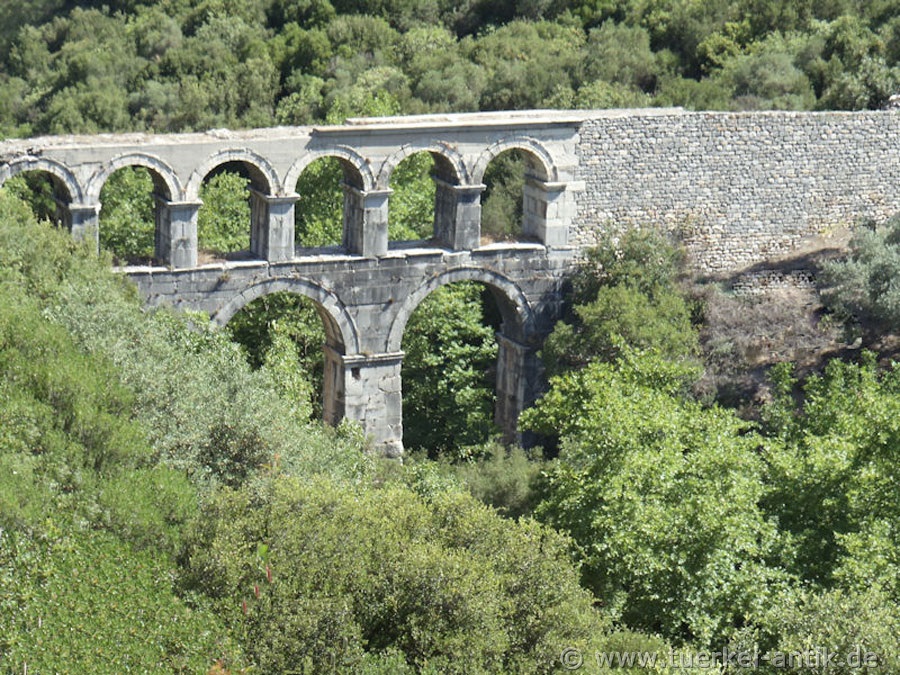 |
|
Ancient aqueducts in Turkey Ephesus (Pollio Aqueduct) |
 |
|
||
| Other names: | ./. | ||
| Roman province: | Ionia | ||
| Location: | Selšuk, Selšuk county, Province İzmir | ||
| The history of Ephesus: | |||
|
Ephesus was one of the most important and largest cities of the Roman Empire. Numerous public buildings were financed both by the city and by rich citizens. Temples for the emperors Vespasian and Hadrian were built as part of the imperial cult. Ephesus was the seat of the governor of the province of Asia. The first settlements in the urban area date back to around 5000 BC. In the 2nd millennium B.C. Hittite texts mention a settlement Apasa in the land of Arzawa, which is probably identical with the later Ephesus. From about the 10th century the settlement by Ionic Greeks began. In 296 BC Ephesus was moved to its present location. Since then, Ephesus was a large port city, which was incorporated into the Roman Empire after 133 BC. Increasing sedimentation shifted the coastline, so that today Ephesus lies several kilometres inland. The city lost its importance. When the Seljuks conquered the city in 1090 AD, it had the format of a small town. After a short period of prosperity, the town was completely abandoned in the 14th century. Ephesus was also famous for the Artemision, the temple of Artemis, one of the seven wonders of the ancient world. The temple of Artemis was built in the first half of the 6th century BC on the remains of old temples. It was 55 x 110 m large. In the year 365 A.D., on the night of the birth of Alexander the Great, the temple was set on fire and burned down by a madman. The Ephesians built a new temple, even more beautiful than the old one. During the Gothic invasion in 263 A.D., when all of Ephesus was plundered and burned down, the temple of Artemis was also plundered and devastated. It was rebuilt, but lost importance due to the spread of Christianity. Ephesus is also important in connection with the development of Christianity. The New Testament mentions the Epistle to Ephesians written by the Apostle Paul to the Christians of the city. According to legend, Mary settled in Ephesus with the apostle John after Jesus' ascension to heaven and taught healing to many people there. The house where Mother Mary died, on a hill above the town, is now a place of pilgrimage. The well water there is said to have a healing effect. |
|||
| Photos: @chim | |||
| Translation aid: www.DeepL.com/Translator | |||
| Source: Wikipedia and others | |||
|
|

